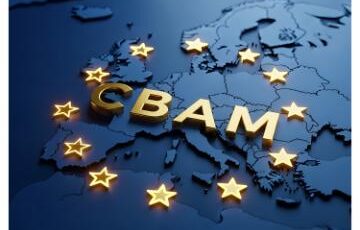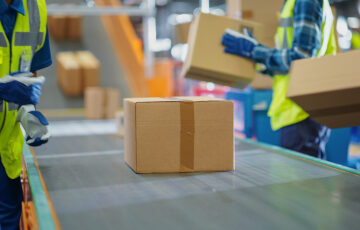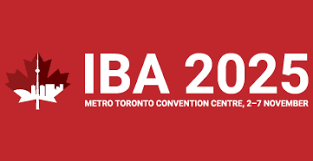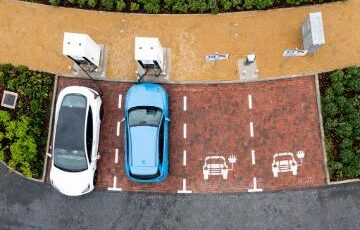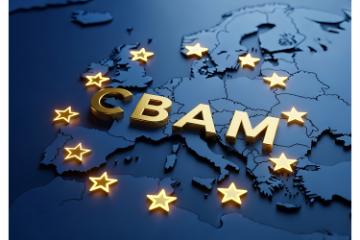
The European Amendment Regulation (Regulation (EU) 2025/2083) for the Carbon Border Adjustment Mechanism (CBAM) entered into force on 20 October 2025 and introduces a threshold of 50 tonnes per importer per year. Companies importing CBAM goods from 1 January 2026 into the Netherlands must be authorized as CBAM declarants by the Dutch Emissions Authority. The regulation simplifies the carbon correction mechanism specifically for small and medium-sized enterprises by eliminating reporting and certificate obligations for small volumes.
The amendment to the CBAM system marks a crucial step in European climate legislation. The mechanism targets carbon-intensive import products including iron and steel, cement, aluminium, fertilizers, hydrogen, and electricity. The objective remains unchanged: promoting fair competition between EU companies and producers outside the European Union by preventing carbon leakage.
The European Commission published the amendment regulation in the Official Journal on 17 October 2025. This adjustment forms part of the broader Omnibus package that makes the CBAM system more accessible for importers. In the Netherlands, Customs and the Dutch Emissions Authority (NEa) jointly implement this European regulation.
What changes does the CBAM amendment introduce for companies?
The amendment regulation introduces fundamental adjustments to the carbon correction mechanism. Therefore, the focus shifts from administrative burdens toward practical feasibility for companies. The most significant change concerns the threshold value of 50 tonnes per importer per calendar year.
Importers who import less than 50 tonnes of CBAM goods annually:
- Are exempt from CBAM obligations
- Need not apply for authorization as CBAM declarant
- Are not required to submit quarterly reports
- Need not purchase CBAM certificates
However, this exemption does not apply to hydrogen and electricity. For these categories, full CBAM obligations remain regardless of import volume. Moreover, companies that exceed the 50-tonne threshold during the calendar year must immediately comply with all obligations. Customs then no longer accepts declarations until the importer holds valid CBAM authorization.
The application procedure for CBAM authorization takes a maximum of 120 days. Consequently, the NEa advises companies expecting to approach the threshold to submit applications promptly via www.cbamtoelating.nl. A practical scenario illustrates this: a trading company in Amsterdam imports approximately 4 tonnes of aluminium monthly. In August, the company reaches a total of 48 tonnes. With the next import of 5 tonnes in September, it exceeds the threshold and must complete all procedures retrospectively.
How does the CBAM mechanism work in practice in the Netherlands?
The Carbon Border Adjustment Mechanism functions as a complement to the European emissions trading system (EU ETS) for producers. The system adjusts the CO₂ price for imported goods at the European external border. This creates a level playing field between European producers subject to the EU ETS and foreign suppliers.
CBAM operates according to three core principles:
- Registration and authorization: Importers of more than 50 tonnes of CBAM goods annually apply for authorization as CBAM declarant. The NEa assesses this application and grants official authorization upon approval. Without this authorization, Customs does not accept import declarations for CBAM goods.
- Certificate purchase: For each tonne of CO₂ released during production of the imported goods, the importer purchases one CBAM certificate. Certificate pricing links to EU ETS prices, ensuring costs comparable to what EU producers pay for their emission allowances.
- Annual accountability: Importers submit an annual verified CBAM declaration to the European Commission. An independent verifier examines the reported emission data. Subsequently, the importer surrenders sufficient certificates to cover the emissions.
The amendment regulation also simplifies the authorization procedure. Companies submitting applications before 31 March 2026 may continue importing provisionally during application processing. This prevents trade disruptions for companies acting in good faith.
What goods fall under CBAM?
The carbon correction mechanism targets six specific product categories that collectively account for a substantial portion of industrial CO₂ emissions. The complete list of commodity codes appears in Annex I of the European regulation. The categories include both primary products and certain processed forms.
CBAM product categories:
- Iron and steel (including cast iron products)
- Cement and cement products
- Aluminium (raw and processed)
- Fertilizers and fertilizer products
- Hydrogen (regardless of volume or value)
- Electricity (regardless of volume or value)
For iron and steel, both raw materials and certain semi-finished products fall under CBAM. A company importing steel profiles for construction must report emissions from steel production. However, a finished product such as a prefabricated balcony currently does not fall under the mechanism.
The European Commission considers expanding the scope to other carbon-intensive sectors. Nevertheless, the current focus remains on these six categories where carbon leakage risk is greatest. Statistics indicate that approximately 85% of potential carbon leakage occurs in these sectors.
When must you take action as a Dutch or EU importer?
The timeline for CBAM compliance varies depending on your import volume and start date. By 31 December 2025 at the latest, the transitional period that began on 1 October 2023 ends. From 1 January 2026, full obligations apply to all importers above the threshold.
Critical dates for importers:
- Before 1 September 2025: Submit CBAM authorization application for guaranteed timely processing
- 31 December 2025: Submit final quarterly report for transitional period
- 1 January 2026: Definitive CBAM phase begins with certificate obligation
- 31 March 2026: Import based on pending application remains possible
- From Q2 2027: Quarterly verification that sufficient certificates are in account
Companies must log into the CBAM transitional registry using eHerkenning. The European Commission manages this register centrally for all member states. The NEa provides comprehensive manuals for using this registry on its website.
Contact specialized legal advisors promptly to adjust your import strategy to CBAM requirements. The regulation’s complexity requires thorough preparation, particularly for companies importing products from multiple third countries with different CO₂ pricing mechanisms.
How do you report CO₂ emissions according to CBAM in the Netherlands?
The reporting obligation forms the core of the carbon correction mechanism. Importers must accurately document how much CO₂ was released during production of their imported goods. The amendment regulation significantly streamlines this process for smaller importers.
Reporting obligations during the transitional period:
Within one month after each quarter’s end, you submit a report to the European Commission via the CBAM transitional registry. This report contains the quantity of imported CBAM goods and associated CO₂ emissions. Emissions are calculated based on actual production data from your supplier or, if unavailable, based on default values.
For the definitive phase from 2026, stricter requirements apply. An independent verifier must examine your annual CBAM declaration before submission. This verification compares reported emissions with actual production data and checks the calculation methodology.
Emission calculation occurs through three methods:
- Actual emissions: Your supplier provides detailed production data including direct and indirect emissions. This results in the most accurate calculation and typically the lowest certificate costs.
- Default values: In the absence of supplier data, you apply default values published by the European Commission per product category and region. These values average 20-30% higher than actual emissions from efficient producers.
- Alternative methods: In exceptional cases, the NEa accepts alternative calculation methods, for example with complex production chains involving multiple intermediate suppliers.
A concrete example: an importer of cement from Turkey imports 300 tonnes annually. The Turkish producer supplies detailed emission data showing production caused 0.7 tonnes of CO₂ per tonne of cement. The importer must then purchase certificates for 210 tonnes of CO₂ (300 × 0.7). Using default values, this figure would reach approximately 250 tonnes of CO₂.
What are the costs of CBAM certificates?
CBAM certificate pricing links directly to the European emissions trading system. Consequently, importers pay a comparable price to EU producers for their CO₂ emissions. Certificate pricing fluctuates weekly based on average EU ETS prices.
The European Commission calculates the average closing price of EU ETS emission allowances weekly. This price then serves as the base price for CBAM certificates. In September 2025, EU ETS prices fluctuated between €75 and €85 per tonne of CO₂. Therefore, CBAM certificates currently cost approximately €80 per tonne of CO₂.
Cost calculation for a practical example:
A trading company in the Netherlands imports 150 tonnes of aluminium profiles from China annually. The Chinese producer reports emissions of 12 tonnes of CO₂ per tonne of aluminium. Total annual emissions therefore amount to 1,800 tonnes of CO₂ (150 × 12). At a certificate price of €80 per tonne, the company pays €144,000 in CBAM costs.
However, if the Chinese producer has already paid for CO₂ emissions in China’s emissions trading system, the Dutch company deducts these costs. China applies a CO₂ price of approximately €10 per tonne. Net CBAM costs then amount to €126,000 (€144,000 – €18,000).
How do you apply for CBAM authorization in the Netherlands?
CBAM authorization constitutes a prerequisite for importing CBAM goods from 1 January 2026. The NEa processes all applications and grants authorization to companies meeting the requirements. The application process proceeds entirely digitally via www.cbamtoelating.nl.
Requirements for CBAM authorization:
- Establishment in the European Union
- Registration in the Trade Register of the Chamber of Commerce
- No outstanding fines or sanctions for customs violations
- Administrative systems for CBAM compliance
- Designation of a responsible contact person
The NEa verifies whether your company meets the financial and administrative requirements. Additionally, the authority assesses your capability to submit mandatory reports correctly. When in doubt, the NEa may request additional documents or schedule a company visit.
The maximum processing period amounts to 120 days after receipt of a complete application. In practice, processing of straightforward applications often occurs within 60 days. Complex situations, for example companies with establishments in multiple EU countries, require more time.
Do you want certainty about your CBAM obligations and authorization procedure? Specialized lawyers in international trade law analyze your specific situation and advise on the optimal strategy for certificate purchase and emission calculation.
What happens when exceeding the threshold in Dutch law?
Companies exceeding the 50-tonne annual threshold must immediately comply with all CBAM obligations. Customs verifies at each import declaration whether cumulative import volume remains below the threshold. Once an importer exceeds the limit, the system automatically blocks further declarations.
Consequences of threshold exceedance:
The importer can no longer import CBAM goods until holding valid CBAM authorization. This leads to immediate trade losses and possible contract breach with customers. Therefore, companies approaching the 50-tonne limit must preventively apply for authorization.
During the application procedure, orders accumulate and additional logistical costs arise. A business that reaches the threshold in July and immediately submits an application can only resume importing in November at the latest due to the required time to process the application. Alternatively, the company must adjust its supplier chain or route orders through another EU importer.
Customs calculates annual volume based on the calendar year (1 January – 31 December). Monthly fluctuations in import volume therefore require careful monitoring. Software for customs administration can generate automatic warnings when you reach 80% of the threshold value.
What sanctions apply for CBAM violations in the Netherlands?
The Dutch Emissions Authority enforces CBAM regulation and imposes sanctions for violations. The sanctions regime follows from European regulation and is concretized in Dutch implementation regulations. Fines can reach substantial amounts that seriously damage companies’ financial positions.
Violations and corresponding sanctions:
- Importing without valid CBAM authorization: fine up to €50,000
- Failure to submit quarterly report timely: fine €5,000 to €15,000
- Reporting incorrect emission data: fine up to €100,000 or 10% of turnover
- Surrendering insufficient certificates: fine €100 per missing certificate plus correction
- Refusing cooperation with verification: fine up to €25,000
The NEa applies cumulative sanctions for repeated violations. Companies receiving two sanctions within three years risk revocation of their CBAM authorization. This effectively means an import ban for all CBAM goods.
Furthermore, Customs retains authority to initiate criminal proceedings for serious fraud with CBAM declarations. Deliberate deception about CO₂ emissions can lead to criminal prosecution for falsification of documents or customs fraud.
A company from Rotterdam received a fine of €80,000 in March 2025 for systematically reporting excessively low emission figures for imported steel. The verifier discovered that actual emissions were 40% higher than reported. Besides the fine, the company had to purchase additional certificates retrospectively.
How does CBAM relate to other sustainability legislation in the Netherlands?
The Carbon Border Adjustment Mechanism does not function in isolation but forms part of a broader package of European climate legislation. Particularly, the EU ETS for producers and the Corporate Sustainability Reporting Directive (CSRD) show overlap with CBAM obligations. However, these instruments serve different purposes and have separate procedures.
The EU ETS requires European producers to purchase emission allowances for their CO₂ emissions. CBAM extends this principle to imported products. Both systems apply identical CO₂ pricing, creating equal competitive conditions. The European Commission gradually reduces free allocation of EU ETS allowances to European companies, parallel to CBAM implementation.
The CSRD requires large companies to report on their complete CO₂ footprint, including Scope 3 emissions (supply chain emissions). CBAM data forms an important component of this reporting. Companies subject to both regulations can directly use CBAM data for their CSRD reporting, creating administrative synergies.
Practical overlap between regulations:
- CBAM emission data serves as input for CSRD Scope 3 reporting
- EU ETS pricing determines CBAM certificate costs
- CBAM verification requirements align with CSRD assurance
- Derogations in EU ETS (for example for certain sectors) influence CBAM corrections
Contact legal specialists in European environmental law to develop an integrated compliance strategy combining CBAM, EU ETS, and CSRD. Coordinated implementation saves costs and prevents duplicate administration.
What are the consequences for international trade relations under Dutch law?
CBAM significantly influences the trading position of European importers vis-à-vis suppliers in third countries. Many non-EU countries warn that the mechanism creates trade barriers and introduces indirect protectionism. Nevertheless, the World Trade Organization (WTO) has not yet classified CBAM as conflicting with international trade agreements.
Suppliers in countries without CO₂ pricing experience competitive disadvantages. Producers in China, India, or Turkey currently pay little or nothing for their CO₂ emissions. Through CBAM, their effective production costs increase by €75-85 per tonne of CO₂. This stimulates them to invest in cleaner production or introduce their own carbon pricing mechanism.
Strategic adjustments in supplier chains:
- European companies diversify toward suppliers in countries with CO₂ pricing
- Non-EU producers invest in emission reduction to lower CBAM costs
- Large producers in third countries lobby for recognition of national CO₂ systems
- Trading partners negotiate bilateral climate agreements with the EU
Approximately 65% of EU cement imports come from countries without effective CO₂ pricing. For this sector, CBAM will have the greatest impact. In contrast, aluminium imports originate 40% from Norway and Iceland, countries with strict climate legislation leading to lower CBAM costs.
The European Commission negotiates with trading partners about mutual recognition of CO₂ pricing systems. If a third country operates an equivalent mechanism, CBAM fully deducts these costs. This creates incentives for global harmonization of climate policy.




